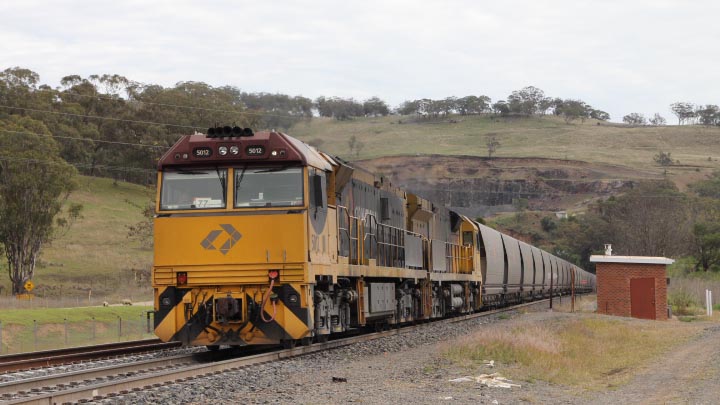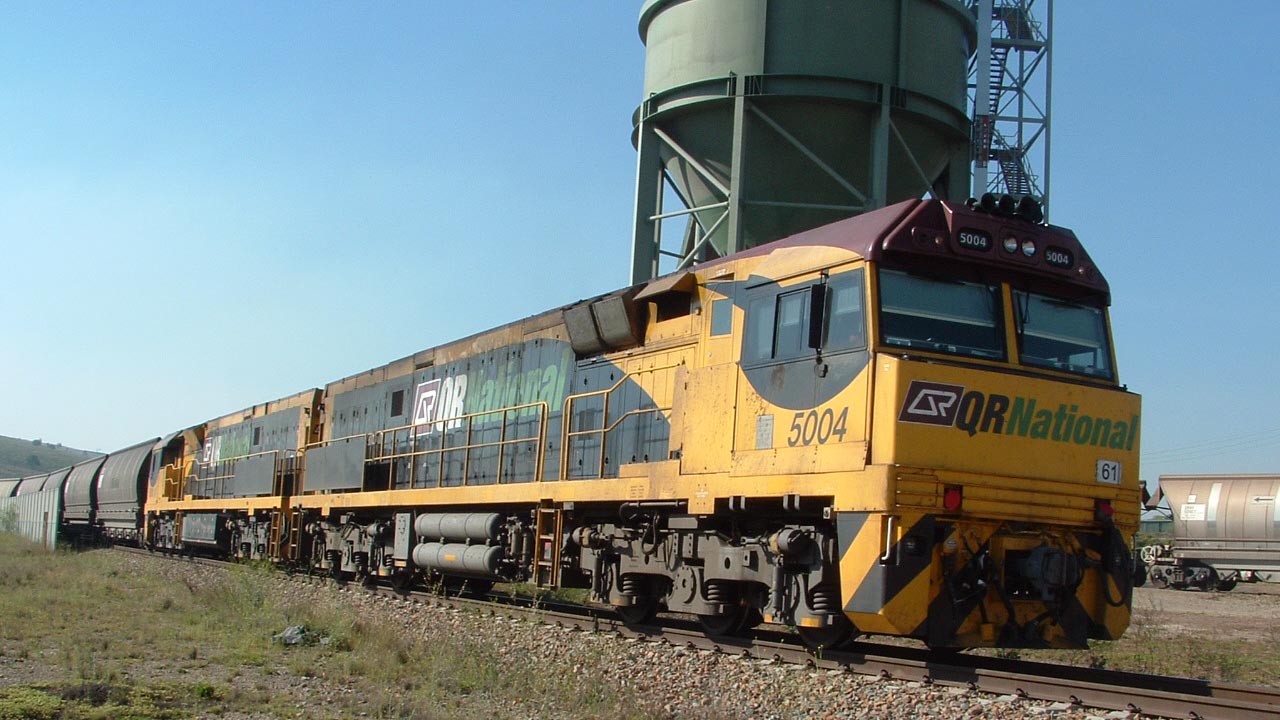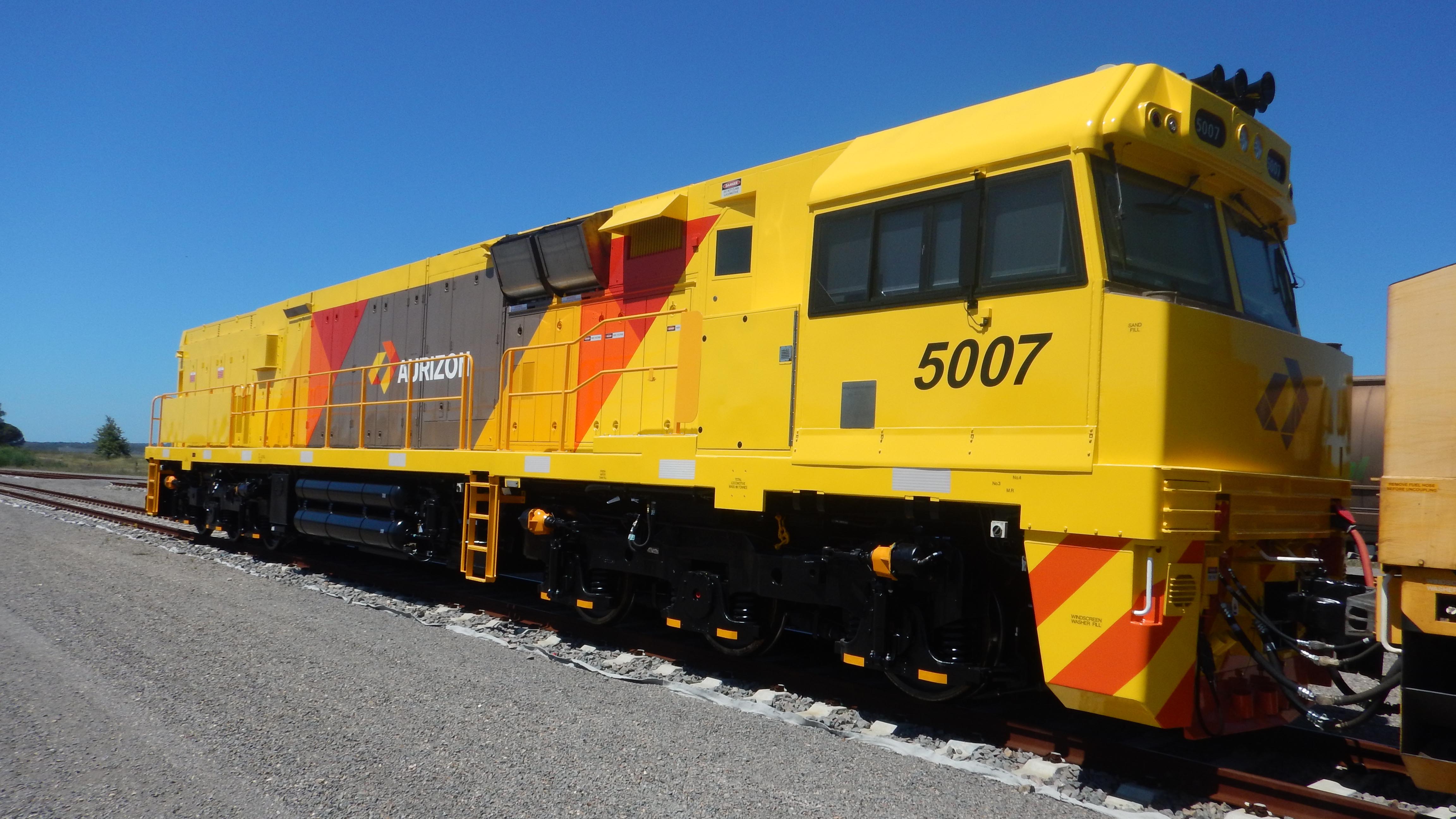WE ARE MANY.
WE ARE RAILFANS.

Railfan-Joe
January 27th, 2022
There's a keen interest from railfans the world over about railways in Australia. The country is one of the few places that can compete regularly with the United States for the length of their consists and the immense distances covered by freight and passenger services. But less is said about some of the unique and interesting locomotives that haul these trains.
Thankfully, we've been provided with a selection of photographs of Aurizon's (formerly QR National's) 5000 Class locomotives by one Australian railfan along with some technical information and details of how and where in Australia they are used.

 5001 and 5002 are paired hood-to-hood in the yard on a bright, sunny day in New South Wales.
5001 and 5002 are paired hood-to-hood in the yard on a bright, sunny day in New South Wales.
A total of twelve 5000 Class locomotives (also referred to as the GE C40 aci) were constructed between 2005 and 2007 at the United Goninans facility in Broadmeadow, New South Wales. The city of Broadmeadow was previously known for its large steam locomotive depot which opened in 1938 before becoming home to diesels from 1973 and closing altogether in 1994. QR National took receipt of the 5000 Class before being rebranded Aurizon in 2012. The design of these locomotives can be traced back to the earlier Pacific National NR Class (GE CV40-9i), built between 1996 and 1998 and visually these, the 5000 Class, the 5020 Class and 6000 Class all share similar features. Unlike some of these other classes which are shared across multiple operators, all twelve examples of the 5000 are operated solely by Aurizon.
 This time, a rare up close and personal shot at night of 5012, the final number in the series of 5000 Class locomotives, now in new Aurizon livery.
This time, a rare up close and personal shot at night of 5012, the final number in the series of 5000 Class locomotives, now in new Aurizon livery.
Power comes courtesy of the 3000kw / 4000hp General Electric 7FDL16 power plant used in a variety of locomotives in the USA such as the AC4400CW and some of the Dash 7 series. This unit powers the GE 5GEB13 AC traction motors in the Co-Co (2 x 3 axle) bogies and these are brought to a stop by the inclusion of Electronically Controlled Pneumatic (ECP) braking. In total, each locomotive weights in at 180 tonnes.

Coal is still a major part of railway operations across Australia for both export and domestic use and the 5000 is used solely for coal trains in the New South Wales' Hunter Valley, due to their weight. Coal is transported out of Mount Arthur Mine, with two thirds going to Newcastle for export and the rest remaining in Australia. Like trains in America, consists use distributed power and though initially it was common to see two locomotives hauling up to 74 wagons, today up to 88 wagons can be formed between them - one locomotive on the front and one at the rear. A mix of 5000 and 5020 Class units can work together in these formations and when consists reach up to 96 wagons, a third locomotive is required.
 The Australian landscape makes for the most impressive railfan shots and the length of this coal train is clear, with what appears to be 5008 making up the rear of the train.
The Australian landscape makes for the most impressive railfan shots and the length of this coal train is clear, with what appears to be 5008 making up the rear of the train.

Today, all twelve locomotives run having been recently overhauled by Progress Rail, (of whom EMD is a subsidary), at Cardiff, NSW and a mixture of old and new liveries can be seen in operation as depicted in the wonderful photographs provided to us by a local railfan.
All of the photographs for this article are used with permission from the photographer, who in turn had permission and authority to safely take photographs in some of the restricted locations depicted, such as rail yards and depots.




